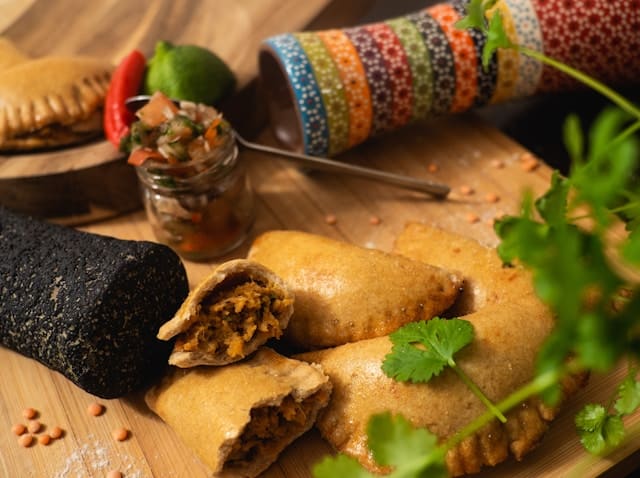Discovering Latin American cuisine

The Latin American cuisine is a vibrant palette of robust flavors that represents the rich cultural and geographical diversity of the region. Steeped in history and seasoned with a mix of American, African, and Spanish influences, it’s a culinary journey that entices your taste buds with every bite. Latin American food is characterized by its ingenious use of staple ingredients such as corn, rice, and beans, as well as a range of exotic fruits, spices, and proteins. Get ready to explore the diverse culinary landscape of Latin America, one dish at a time.
The Blend of Cultural Influences on Latin American Cuisine
Latin American cuisine is a sumptuous tapestry woven with threads of varied cultural influences. The first of these influences bear the mark of the region’s indigenous peoples, who harvested crops such as corn, beans, and potatoes. Later, the arrival of Spanish and Portuguese colonists brought rice, beef, and various spices to the mix. The African slaves they brought with them contributed okra, plantains, and other ingredients to the culinary matrix. Let’s delve deeper into this rich cross-cultural amalgamation.
A lire également : Secrets to successful homemade pasta
The Indigenous Influence
The cornerstone of Latin America’s culinary tradition is the indigenous influence. Corn, in particular, has been a staple ingredient in the region for thousands of years. It has found its way into numerous traditional dishes, from the tortillas of Mexico to the tamales of Central America. Other important indigenous ingredients include tomatoes, potatoes, avocados, and various types of pepper.
The Spanish and Portuguese Influence
The conquest of the Americas by the Spanish and Portuguese in the 15th and 16th centuries brought a significant change in the culinary scene. These settlers introduced livestock farming, adding beef, pork, and chicken to the local diet. They also brought rice, wheat, and a variety of fruits and vegetables from the Old World. The Spanish and Portuguese also introduced the culinary art of preserving food through pickling, an influence still evident in many Latin American recipes today.
A découvrir également : Tips for quick and efficient cooking
The African Influence
The African influence on Latin American cuisine is most palpable in the coastal regions, where slaves were brought over during the colonial period. African slaves introduced new cooking techniques, as well as a host of new ingredients like okra, plantains, and various types of fish. The deep-fried snacks and stews that are popular in the region today echo the culinary traditions of Africa.
The Signature Dishes of Latin America
From Mexico’s spicy tacos to Brazil’s feijoada, Latin American cuisine boasts an array of signature dishes that reflect the region’s cultural diversity and culinary creativity. Here’s a glance at some of the iconic dishes that you might encounter on a gastronomic journey through Latin America.
Mexican Cuisine: Beyond Tacos
When you think of Latin American cuisine, Mexican food is likely the first to come to mind. Mexican cuisine is much more than just tacos and burritos; it is a cornucopia of flavours and textures. Consider the mole, a sauce that combines chocolate, chilies, and spices in a rich and complex blend. Or the pozole, a hearty stew made with hominy corn, meat, and garnished with shredded lettuce, chili peppers, radish, onion, lime, and oregano.
The Delights of Peruvian Cuisine
Peruvian cuisine has been gaining international acclaim for its culinary innovation and fusion of flavors. Peru is especially known for its ceviche, a dish made from fresh raw fish cured in citrus juices, and spiced with ají or chili peppers. Another popular dish is the lomo saltado, a stir-fry that marries Peruvian ingredients with Asian techniques, a testament to the country’s multicultural heritage.
The Hearty Flavors of Brazilian Cuisine
Brazilian cuisine reflects the country’s diverse cultural heritage and vast agricultural resources. Feijoada, a black bean stew with pork, is often considered Brazil’s national dish. Another popular dish is acarajé, a deep-fried ball of dough made from black-eyed peas, stuffed with vatapá, a paste made from bread, shrimp, coconut milk, and palm oil.
The Role of Corn, Rice, and Beans in Latin American Cuisine
Corn, rice, and beans are the backbone of Latin American cuisine. They serve as basic components around which meals are built, providing energy, important nutrients, and a world of flavors. Learn more about how these three staples have shaped the culinary identity of Latin America.
The Pre-Eminence of Corn
Corn is a fundamental ingredient in many Latin American dishes. In Mexico, corn is used to make tortillas, tamales, and a variety of sweets. In Central and South America, corn can be found in everything from beverages like chicha to soups and stews. This versatile grain is a testament to the ingenuity of Latin American cooking.
Rice: The Spanish Legacy
The introduction of rice by the Spanish settlers had a profound impact on Latin American cuisine. Today, rice serves as a staple side dish in many meals, often cooked with a variety of spices, vegetables, and proteins. From the Mexican rice and beans to the Cuban Moros y Cristianos, rice dishes are comfort food at its best in Latin America.
Beans: The Protein Powerhouse
Beans are an essential part of the Latin American diet, providing a plant-based protein source that is often paired with rice for a complete protein. Whether it’s black beans in Cuban cuisine, pinto beans in Mexico, or feijoada in Brazil, beans are a vital ingredient that enhances the nutritional value and flavor of Latin American dishes.
The Latin American cuisine is a visual, gustatory, and aromatic adventure, a mouthwatering blend of American, Spanish, and African influences that takes you on a sensory journey across a culturally rich and geographically diverse region. As you explore its array of dishes, you realize that Latin American food is not just about sustenance, but also about history, tradition, and the joy of bringing people together around a shared meal.
Exploring Local Ingredients and Cooking Techniques in Latin American Cuisine
Latin America’s wealth of local produce and unique cooking techniques have significantly influenced its cuisine. From the diverse seafood in the coastal regions to the abundant fruits and vegetables in the tropical areas, each region’s culinary identity is intrinsically tied to its local resources.
Seafood Delights in Coastal Regions
The coastal regions of Latin America offer an incredible variety of seafood, from fish to shellfish, crustaceans, and more. In Peru, seafood is the main ingredient in the national dish, ceviche, while in Brazil, coastal regions craft the traditional moqueca, a flavorful stew of fish and shrimp. Chile’s coastline, one of the longest in the world, yields an amazing range of seafood featuring prominently in dishes such as curanto, a hearty dish cooked in a hole in the ground using hot stones.
Fruits and Vegetables: Tropical Flavors
Latin America’s tropical climate allows for a rich variety of fruits and vegetables. Avocados, tomatoes, chili peppers, and a myriad of citrus fruits are staples in many Latin American dishes. This rich produce is not only used as main components in dishes but also as salsas, garnishes, desserts, and drinks. One cannot talk about Latin American cuisine without mentioning the beloved guacamole, a Mexican dish made from ripe avocados.
Cooking Techniques: A Blend of Traditions and Innovation
Traditional cooking techniques in Latin America vary greatly from region to region, reflecting the diversity of its cultural heritage. Steaming is a common method, used in the preparation of tamales, a traditional dish made from corn dough filled with meats, cheeses, fruits, or chili. Grilling, especially over open fire, is another popular technique, exemplified in Argentina’s asado, where beef ribs are slow-cooked over a parrilla (grill). Meanwhile, baking in underground pits is a technique used in the Yucatán Peninsula of Mexico for dishes like cochinita pibil.
Conclusion: The Rich Tapestry of Latin American Cuisine
In conclusion, the Latin American cuisine is a vibrant gastronomic landscape that tells the story of its people, history, and land. From the indigenous influence that brought corn, beans, and potatoes, to the Spanish and Portuguese settlers who introduced livestock farming and rice, to the African slaves who contributed okra, plantains, and new cooking techniques, each wave of cultural influence has left an indelible mark on the culinary traditions of Latin America.
The Latin American cuisine is as diverse as its geography, with each country, and even each region within a country, boasting its own unique flavors and dishes. Whether it’s the spicy richness of Mexican cuisine, the seafood delicacies of coastal Peru, or the hearty flavors of Brazilian cuisine, there’s a delicious culinary adventure waiting for you in every corner of Latin America.
But Latin American food is more than just a collection of delicious dishes. It’s a celebration of cultural diversity, a testament to human ingenuity in making the most of the land’s bounty, and a symbol of the Latin American spirit of hospitality and joy. So, the next time you savor a Latin American dish, remember that you’re not just eating a meal – you’re partaking in a rich and vibrant culinary tradition that spans millennia. And perhaps, that’s the most delicious thing about Latin American cuisine.
